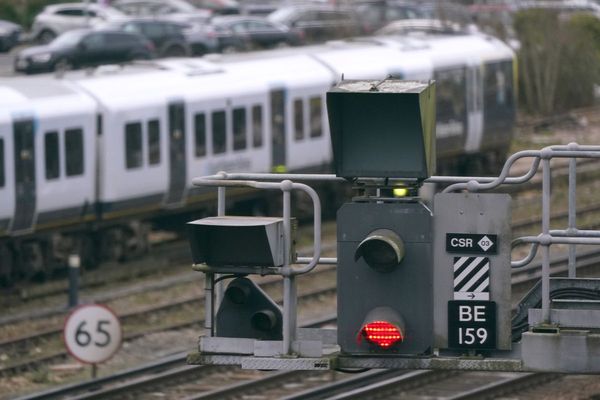
After all the ballots cast in the 2020 U.S. election were tallied, it became increasingly clear that Joe Biden had successfully rebuilt the “Blue wall” across the Midwest, home to white working-class voters who powered Donald Trump to the presidency in 2016. Peek over the wall, however, and the view is clear: Biden’s narrow victories in Michigan, Pennsylvania, and Wisconsin were made possible by historically high anti-Trump turnout, particularly among Black urban voters. Working-class whites from struggling manufacturing communities doubled down on Trumpism. Voters angry about the deterioration of their communities, anxious about their own economic futures, and uncomfortable with social changes turned out in droves, more excited than ever by Trump’s message of nostalgia, nationalism, and nativism.
Around the world, rust belt regions like these—locked in a difficult and prolonged phase of economic restructuring—are crucibles of neopopulism. Everywhere, former economic powerhouses have become fertile ground for anti-immigrant sentiment and ethnonationalism, nostalgia for an economy and society of yesteryear, and retreat from the international order. Rust belt regions are not the sum total of the geography of populism—rural areas are equally significant—but they represent a uniquely concentrated and intense manifestation of the populist moment, especially in the United States and Europe, which undermines from within support for democracy and, by extension, support for the international political order that has delivered decades of political stability, global security, and economic opportunity.
So, what to do? Evidence suggests that where struggling rust belt communities have secured new economic footing, the lure of populism wanes. And so, as Biden prepares to take office, he and his counterparts in Europe should focus on creating the conditions for economic success in rust belt regions. The work can begin with measures to promote the regional exchange of best practices across the Atlantic and the adoption of “ally-shoring,” to restructure and shore up supply chains in response to the COVID-19 pandemic. “Populism in place” is a trans-Atlantic problem, and if it isn’t treated that way, the United States and Europe will continue to face anxious, angry electorates capable of sowing political chaos at home and abroad.
Populist political parties have always found an eager audience among citizens struggling to adapt to economic and social change and feeling ignored or scorned by elites. But it was long assumed that a strong nationalist and xenophobic political movement would not capture the halls of power in a mature Western democracy. All that changed with the success of the 2016 British “Leave” campaign, which led the country out of the European Union. Brexit’s success in a public referendum proved that politicians who whipped up nationalist sentiments and tapped voters’ unease about economic and social change, particularly in the United Kingdom’s struggling industrial heartlands, could win against all apparent odds. The 2016 U.S. presidential election delivered an even bigger shock, as voters in and around the once mighty, now hollowed-out manufacturing communities of Michigan, Pennsylvania, Wisconsin, and the Upper Midwest joined conservative voters in the rural regions to install Trump in the White House, turning the country upside down.
Similarly, in the 2017 German federal elections, the extreme right Alternative for Germany (AfD) party received significant support from communities in the Ruhr Valley, the formerly left-leaning industrial coal and steel region, as well as from deindustrialized and rural regions in the former East Germany. As in the United States, the backlash against immigrants, aggressively fanned by nationalist leaders, was the central issue and helped win the AfD support in more traditionally conservative strongholds such as Bavaria as well.
In France, meanwhile, the far-right National Rally (formerly National Front) has established itself in the old steel and coal country in the north of the country. This is also where National Front leader Marine Le Pen found majorities in her 2017 presidential election loss to Emmanuel Macron. The country’s yellow vest protests that began in late 2018 likewise originated in France’s postindustrial zones, where many citizens believed that a proposed fuel tax hike was an unacceptable economic hardship. Much like the United States’ Tea Party movement, these colorful French protests quickly morphed into a clash between out-country working-class residents under economic stress and more prosperous urban elites.
Further south, in Italy, the dramatic resurgence of populist and nationalist parties was evident in the 2018 general election, as the populist League and the Five Star Movement rode a wave of anti-immigrant sentiment to significant electoral gains. Their support came from the industrial north and struggling regions of the rural south—eerily mimicking the cross-regional coalition that pushed Trump to power two years before.
The most recent national election in the trans-Atlantic space provides little cause for optimism, despite the outcome. The 2020 U.S. vote reflects an even more polarized electorate than in 2016, underlining sharp asymmetries in economic opportunities and optimism about the future among Trump and Biden voters. Biden owes his narrow win to a coalition of women, young people, and above all the Black community. In the heartland, Biden’s support among white voters was centered in those communities where residents are better educated, better off, and benefiting from revitalized regional economies. Trump, on the other hand, received overwhelming support from the rural heartland, as well as from residents of struggling industrial communities in the Midwest that are still experiencing long-term population loss and economic decline. “Populism in place,” in short, is still here to stay.
Research makes clear that, when “old economy” communities succeed in finding new economic opportunity, the attitudes of residents change—as do outcomes at the ballot box. For example, in regions anchored by economically resurgent industrial communities such as Pittsburgh and Grand Rapids, Michigan, nationalism and nostalgia lost ground to moderate centrism in the 2018 U.S. midterm elections and in the November 2020 elections as well.
The United Kingdom, France, and Germany have seen similar results, where populist sentiments are strongest in struggling communities, while residents of older industrial centers that have turned the economic corner are more resistant to the pull of populist appeals. In Germany’s Ruhr Valley, some communities have begun a successful transition of enterprises, workers, and localities to a new economy; in Duisburg, home to a successful effort to rebuild the local economy around microelectronics, the far-right AfD underperformed significantly relative to the regional average in the 2017 national elections.
In France, although Le Pen carried nine of the 10 French departments with the highest unemployment rates in the 2017 elections, former industrial cities such as Lyon and Strasbourg that have navigated economic change supported the more moderate and ultimately successful party led by Macron. In the Brexit referendum, recovering manufacturing centers such as Leeds, Manchester, and Newcastle upon Tyne voted Remain, while still-struggling communities including Sheffield and Blackpool chose Leave.
The logic is understandable. Communities that feel more optimistic about their future appear to gain the psychic space to be reflective, tolerant, and forward-looking. And it is clear that these regional transformations do not happen by chance. They are the product of deliberate actions that public and private leaders have taken to transform regional economies. For elected officials to do nothing, in other words, is to leave the people living in these regions feeling alienated and left behind, and thus more likely to continue to drive a politics of nationalism, protectionism, nativism, and a retreat from international alliances.
There are already encouraging signs of a restoration of U.S.-European ties. Biden has announced that his administration will give priority to the task of repairing and restoring the trans-Atlantic relationship. Meanwhile, the worsening pandemic provides added urgency for the United States and Europe to find new ways of working together. The manner in which the trans-Atlantic partners respond to the weakened state of trans-Atlantic ties and the pandemic can either ameliorate or exacerbate the condition of these rust belt communities that now serve as the territorial base for nationalism, xenophobia, and anti-globalism. To fully address what ails them, both the United States and Europe must work to integrate “populism in place” into their relationship, thereby broadening the traditional definition of the trans-Atlantic agenda beyond trade and security.
What might an expanded trans-Atlantic agenda look like? It should start by actively promoting the creation of structured transnational networks across the Atlantic to foster the exchange of best policy practice and innovation at the city and regional levels, with special attention to diffusing models of successful economic transitions to places that are still looking for a way up and out.
After that should come an even more ambitious agenda item, one that would require Western governments to rethink critical supply chains in the context of the COVID-19 crisis. Although many see the pandemic as an opportunity to onshore supply chains and production systems for economic and national security reasons, a more fruitful path, both economically and politically, would be to adopt an “ally-shoring” approach. Ally-shoring entails leaning into economic partnerships with countries that share democratic values and strategic interests. It means working closely with allies—above all, Europe—with which the United States already has tightly wound production and business service networks. With forethought, planning, and coordination, ally-shoring the production of critical goods and commodities such as medical products, foodstuffs, and communications equipment could boost economic activity in the transitioning rust belt regions in the United States and Europe and at the same time rebuild the international order.
The time is ripe for the trans-Atlantic partners to recognize the plight of their old rust belts and help them adapt successfully to profound economic and social changes. The United States and Europe can do this best in concert, by revitalizing their alliance, rebuilding their economies, and learning from each other about the best ways to tackle the problem of “populism in place.” By adapting the spirit of the Marshall Plan to the radically different circumstances of the present-day trans-Atlantic relationship, these nations can pull themselves—and the world—out of political chaos once again.







